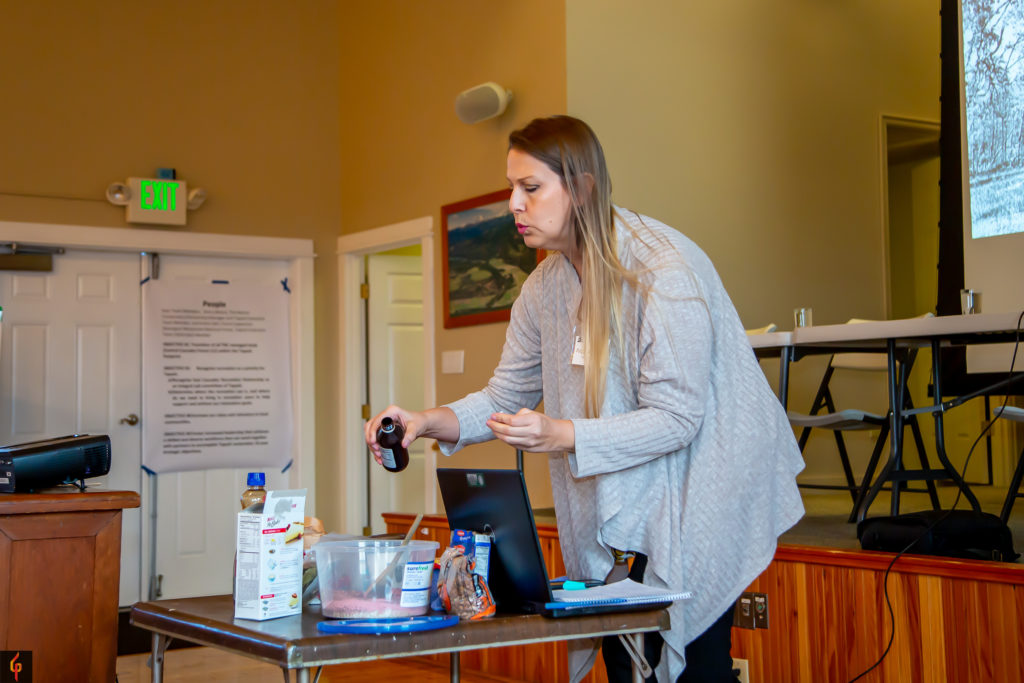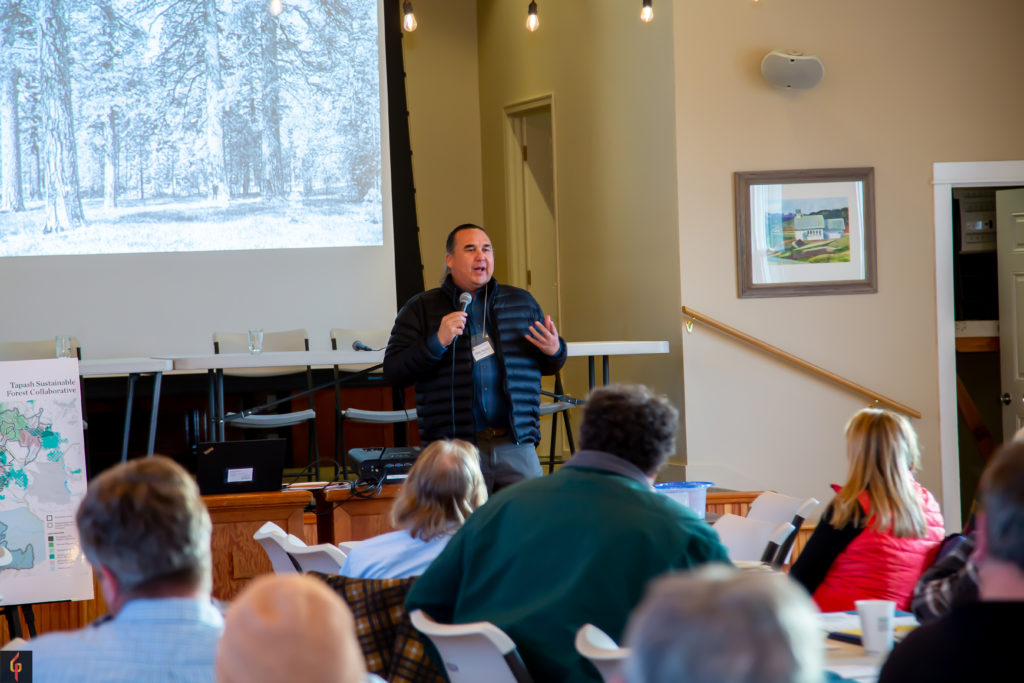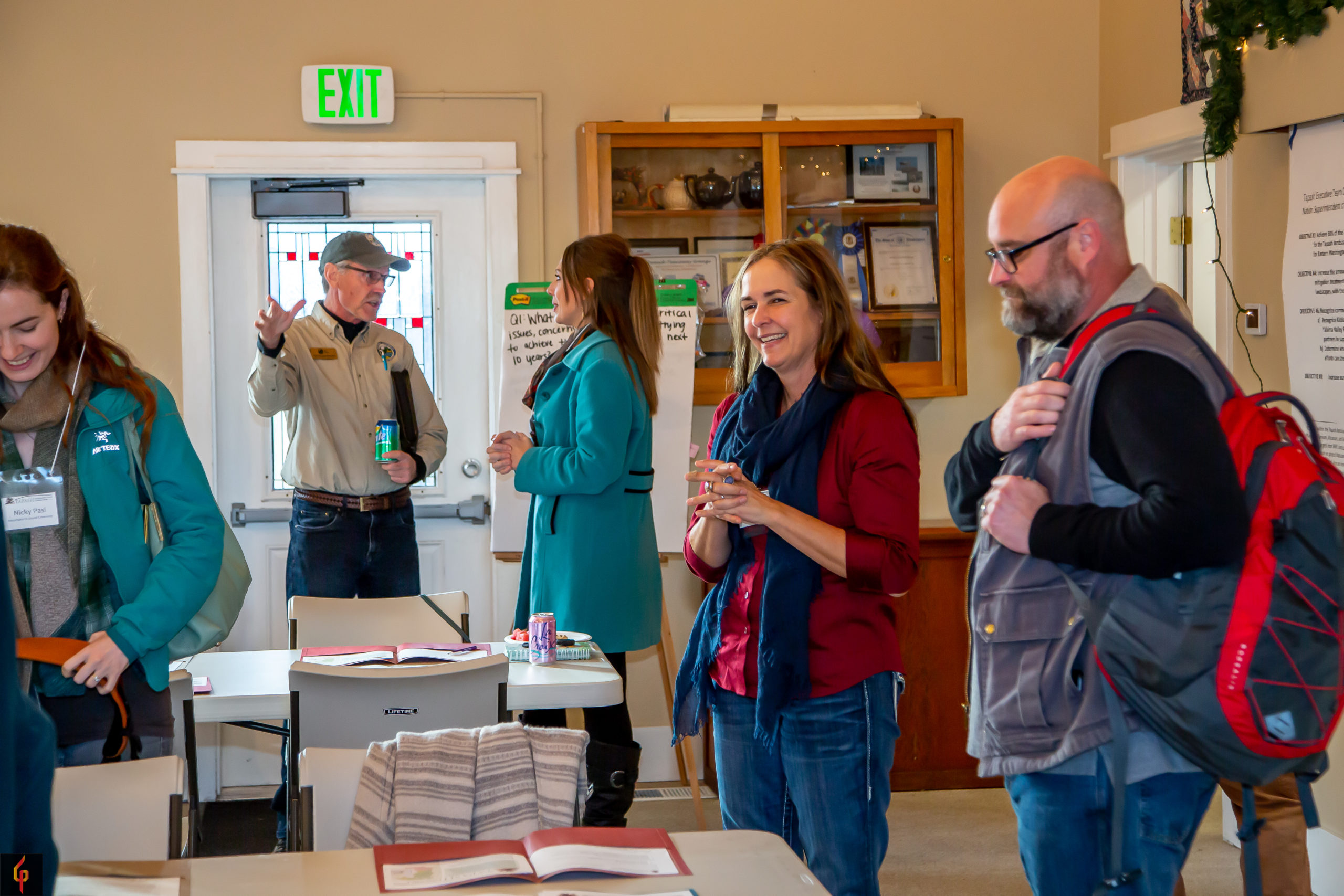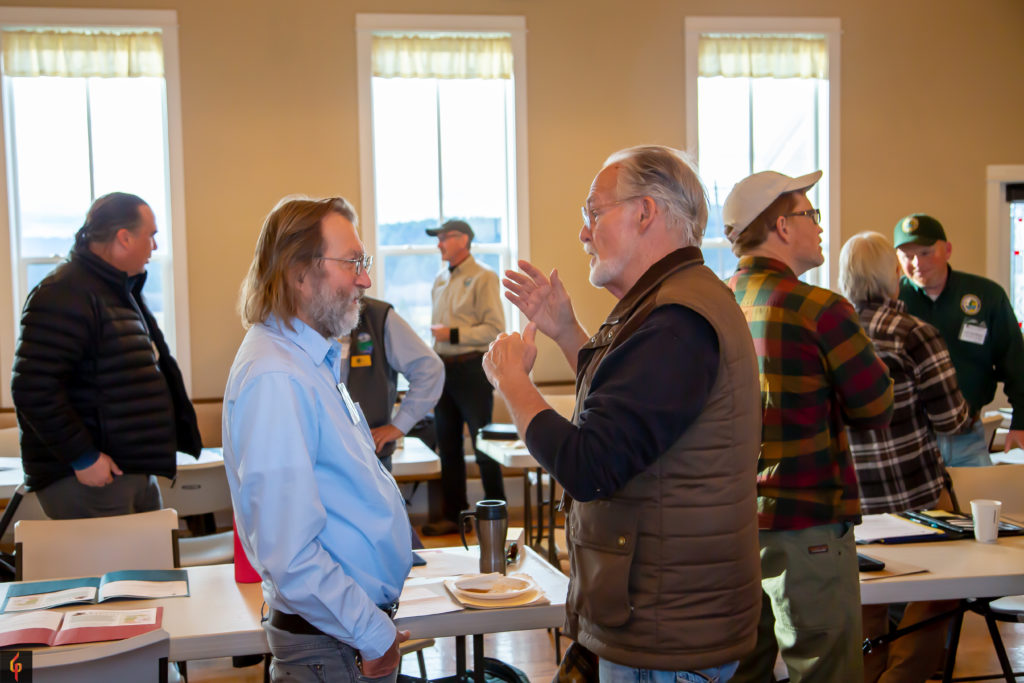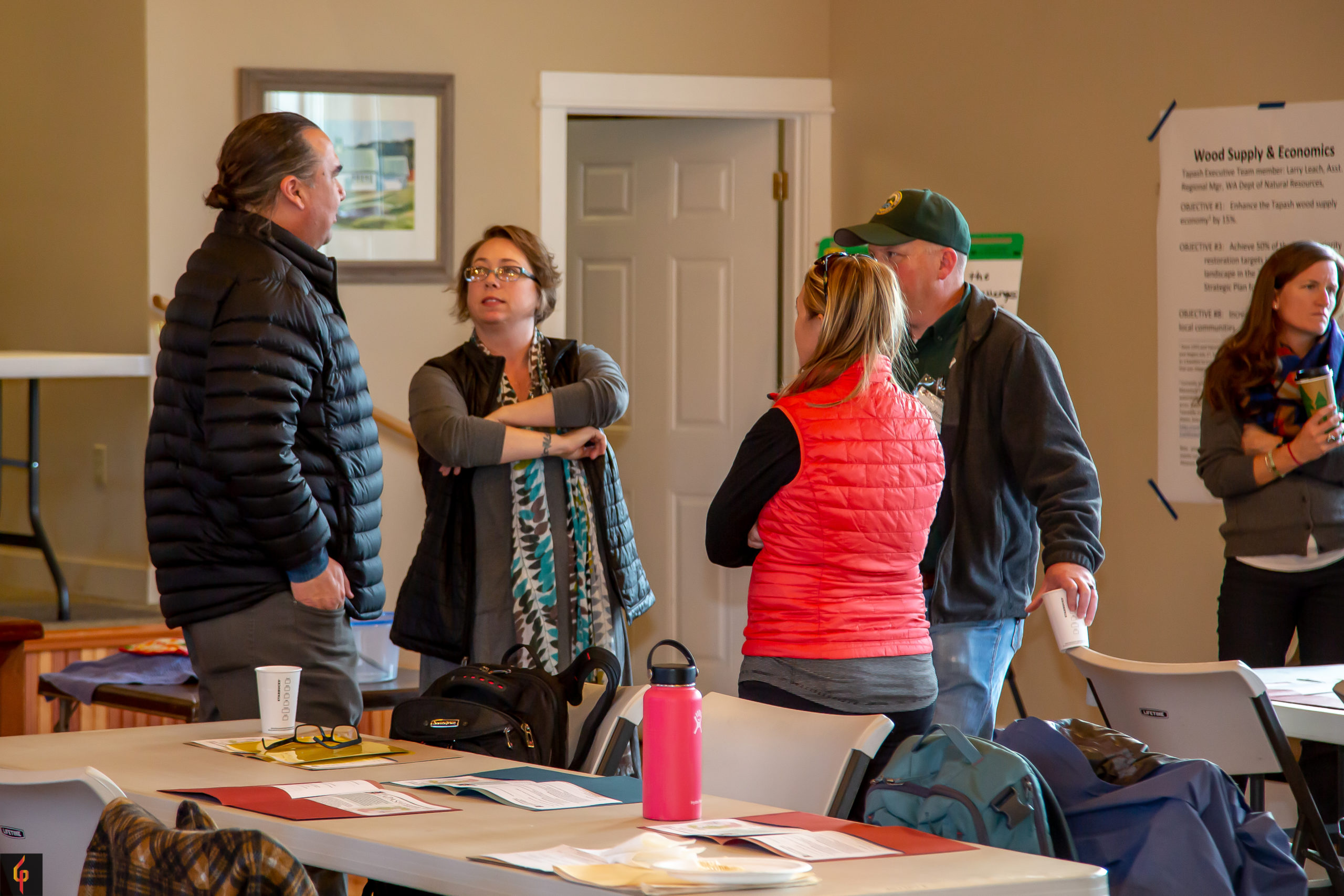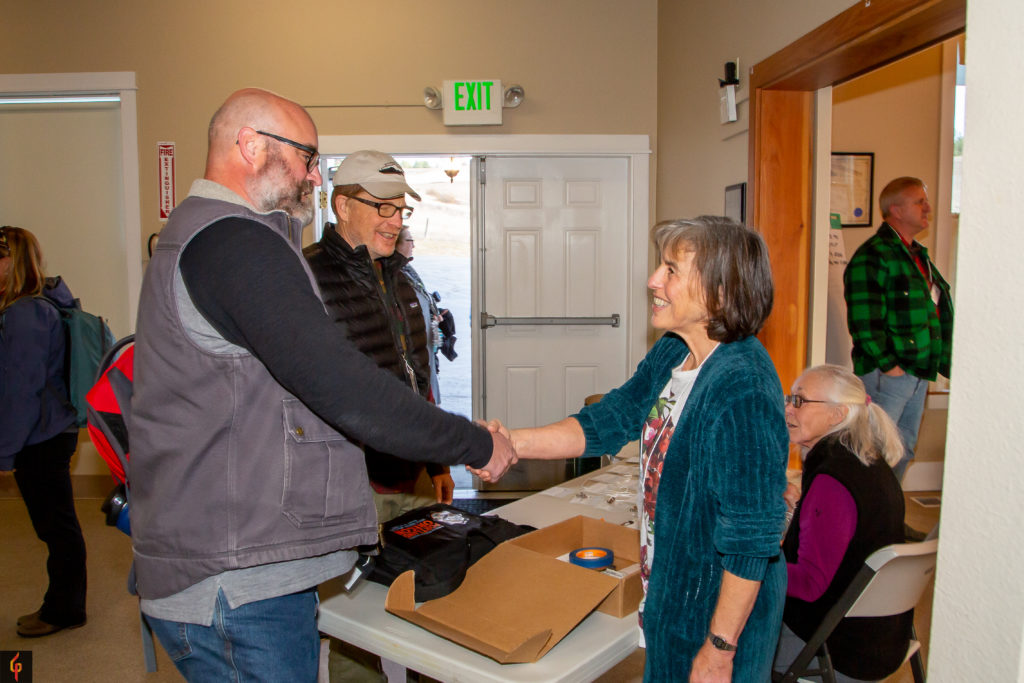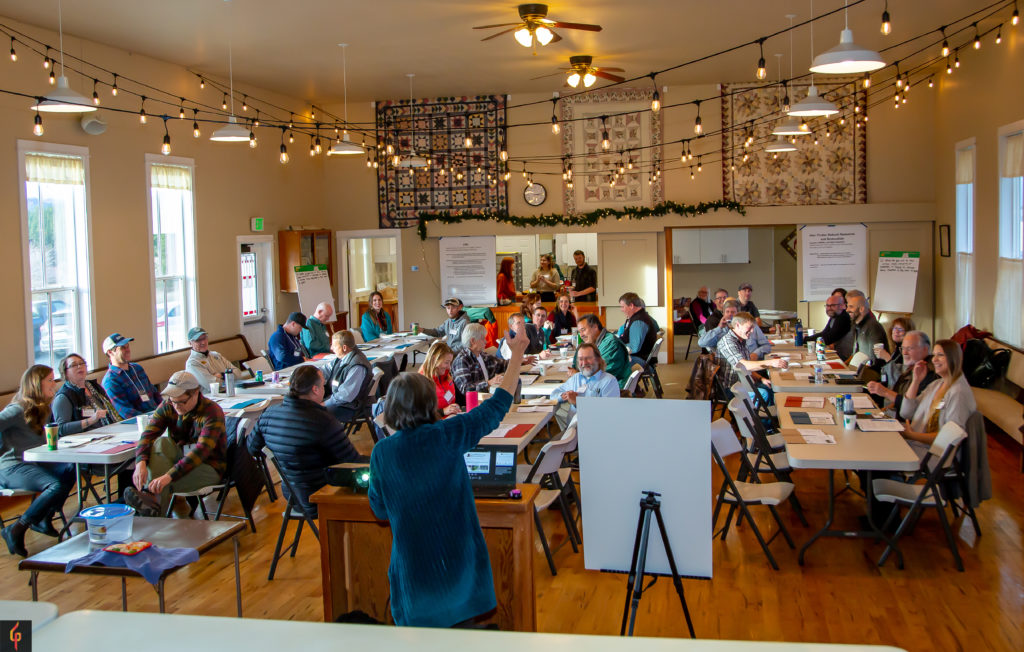
A million thanks to all of you who participated in our first quarterly stakeholder engagement meeting, held at the Swauk-Teanaway Grange outside of Cle Elum, Washington. And special thanks to The Nature Conservancy volunteers from the Seattle Office and Cle Elum Field Office for their many hours of logistical support.
As background, here is some useful information to put the day into context
- Agenda and goals for 11/12/19 meeting
- Tapash Strategic Plan, most recently updated August 2019
- New map of showing the Tapash landscape and our current high priority watersheds and projects
- List of those registered
Below is a summary of our break-out group sessions. Note that some of the participants sent in additional comments after the stakeholder meeting to flesh out abbreviated flip-chart notes.
Wood Supply & Economics Break Out Group
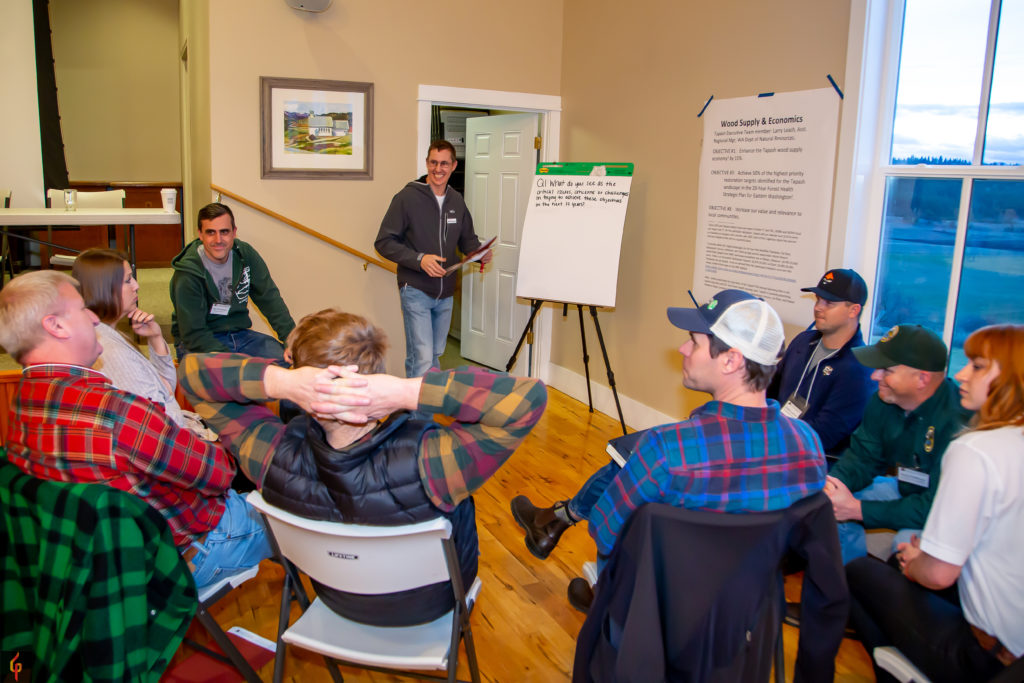
Q1: What do you see as the critical issues, concerns, or challenges in trying to achieve these objectives in 10 years?
Lack of Infrastructure
- Specifically, there is a need for more small diameter mills on east side. This is very likely to not happen based off the current wood supply so I think we need to spend our time focusing on how we can create viable timber sales with the current set-up. Considering the current log supply, I do not believe a company would be willing to invest in such an area as is. If the log supply can consistently improve overtime, I think companies would start to look at investment.
- One thought that comes to mind is the idea that infrastructure is one of the last pieces to this puzzle. To paraphrase what I thought the conversation was…..Confidence in a sustainable supply will drive the need for infrastructure; The supply base will need to come from the USFS; To get the necessary supply rates there would likely need to be a change to the Forest Plan. So: Change the forest plan -> identify the USFS sustainable yield and get it out on the market -> = get the infrastructure. It was discussed that infrastructure is definitely not part of the equation for the next 2 years at least, with regard to the DNR biennium budget because there are so many hurdles to get through first.
Challenge Establishing and Meeting Targets
- Tapash should focus some time on how to help the Forest meet their targets, infrastructure cannot be built if the target is not consistently met and increased over time to support the desire for investment.
- Establish and meet targets This is crucial. The USFS is working through some old sales right now but I believe they will be back on track within 2-3 years with a consistent program.
Need for a 1994 Northwest Forest Plan Update
- One of the large hang-ups for the forest service is their ability to work in LSR areas. They worked through that on the Swauk Pine sale but the sale was not viable. At least there is a system in place to manage LSR areas which would help out immensely with timber output.
- The 1994 NWFP Land Use Allocation ‘Late-Successional Reserve’ is not intended for meeting scheduled timber targets. Select passages from Spies “25 years of NW Forest Plan, what have we learned?”
- The NWFP was intended to be a 100-year plan but also to be flexible enough to adapt to new conditions, threats, and knowledge.
- The 2012 planning rule represents the most important change in federal forest biodiversity policy nationwide over the past 30 years, but it has yet to be applied to forest plan revision in the NWFP area. Under the 2012 planning rule, biodiversity conservation efforts should emphasize ecosystem approaches and focus on a few species of concern including, but not limited to, ESA-listed species.
- The (current) reserve approach of the NWFP – which focuses only on fire-risk reduction and conservation of dense, multilayered forests – is inconsistent with management for ecological integrity in the dry, historically fire-frequent forests (fire frequency <50 years) that occupy 43% of the NWFP area.
- Increased timber supply would be a by-product of dry forest restoration and not the impetus of 1994 NWFP update.
Lack of Market Opportunity and No Bids
- Lack of market opportunities at this time – no bids From my experience, sales have been going no bid mostly for the following reasons: logging systems % (too much skyline, helicopter), species ratio (PP very difficult to market in area, too much pulp on skyline), Volume Per Acre (Increases logging costs substantially, especially in skyline units), operating seasons (winter only with strict parameters is a killer, or not allowing you to log in winter at all). As a general rule of thumb, skyline is double the cost of ground based and helicopter is double the cost of skyline.
- Need to incorporate new technology successfully
- Demand vs need? Looking into ground-based logging on steeper ground, perhaps up to 45%. Other forests in Idaho are doing this currently. Also, analyzing for tethered logging could make many of these sales viable if given the option.
- Example – BioChar as a fuel interest but no investment
- Challenge of Finding skilled tradespersons
- The age of the average forestry/logging professional is high. We need to find ways to recruit younger loggers into the woods.
Q2: Do you have any practical suggestions for how Tapash might address or work through these challenges?
- TFPA Pilot: Collaborate with Yakama Nation to consider their interest in a Tribal Forest Protection Act project
- GNA: Utilize the GNA tool where appropriate, build a working relationship with the DNR to look for these opportunities
- Utilize Designation by Prescription: This will save significant costs upfront on the marking and will allow agencies to put timber sales out at a faster rate. We’ve found this to work out very well as contractors typically pick up on the prescription rather quickly.
- Minimize layout costs: Some forests have begun to use virtual boundaries where the contractors can use avenza maps for the unit boundaries instead of the agency laying out the boundaries. It saves upfront costs and time.
- Technology: Utilizing Avenza Maps, modern/advanced logging equipment (psi/ground impact, can log on steeper slopes, tethered logging)
- Improved logging systems: Use the expertise within the Tapash stakeholder group to get feedback on logging systems while they are being analyzed and developed, not at the point in which a sale goes no bid. Also analyze new systems, such as tethered, so that the appropriate tool can be chosen at implementation.
- Railroad log sorting yard(s): I think that the economics of railroad log sorting yard(s) should be explored, this type of operation would be more flexible with changes in supply and demand and require less capital investment (County Level?) in an era where many years of sustainable yield may burn overnight.
- Education: Help folks understand the great benefits of these restoration projects; provide for outreach and education of the collaborative efforts and work accomplished. Often times, friends, family, and neighbors don’t even know what we do, and we need to work to educate folks so they can be supportive of collaborative activities.
- Maximize the land use allocation: When harvesting on matrix land, harvest to the extent allowed under this allocation; emphasizing timber production and volume in matrix.
People Break-Out Group
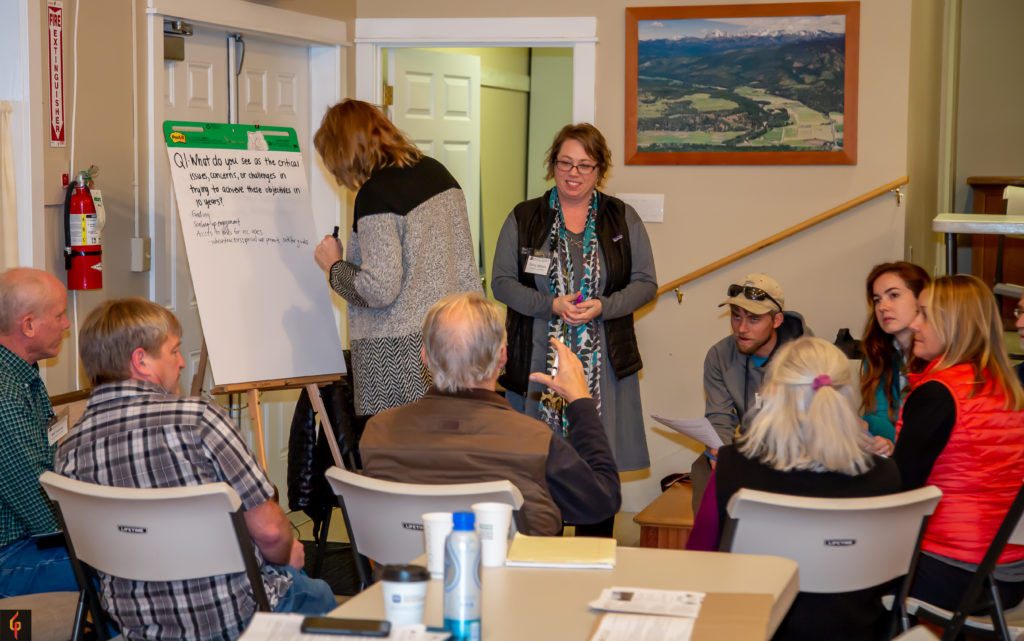
Q1: What do you see as the critical issues, concerns, or challenges in trying to achieve these objectives in 10 years?
- Funding
- Scaling up Engagement
- Access to lands for rec uses & commercial opportunities
- Subcontractors: special use permits, outfitter guides
- How to batch TNC parcels
- Communication, reaching folks with the facts
- How to reach the right people to get info out (Human Ecology Mapping)
- Managing conflicting uses-talk issues through, increase opportunities, broaden thinking
- Getting groups to the table, talk through challenges, build trust (this takes time – Little Naches Working Group is a good example).
- The tough conversations may be what you have to focus on (75% example)
- Tragedy of the Commons – # of people, amount of space available
- Limits, Permits, Self-Policing/Peer pressure
- Youth – bring in them as leaders, outdoor classrooms
- Fire protection brings interests together, don’t use this opportunity enough to discuss trails (eg.)
Q2: Do you have any practical suggestions for how Tapash might address or work through these challenges?
- Outdoor Classroom – introduce hot resource issues, job opportunities, etc. Develop curriculum for schools to use that reflects local connections.
- Keep finding ways to engage Yakima govt/leaders; inform people of development pressures, where economic opportunities can occur.
- Proactively ask to meet w/Yakima Council, inform of our work.
- Advocacy to share goals, needs w/decision makers, govt.
- Recognize we’re in transition – inward to outwards. Need intentional outreach communication strategy. Funding fire suppression vs. funding proactive treatment.
- Reach out to other groups, offer to be a speaker.
- Proactive – what is the “win” for them (the group you are addressing).
- Trails, roads – have a clear list of needs to share.
Fire Breakout Group
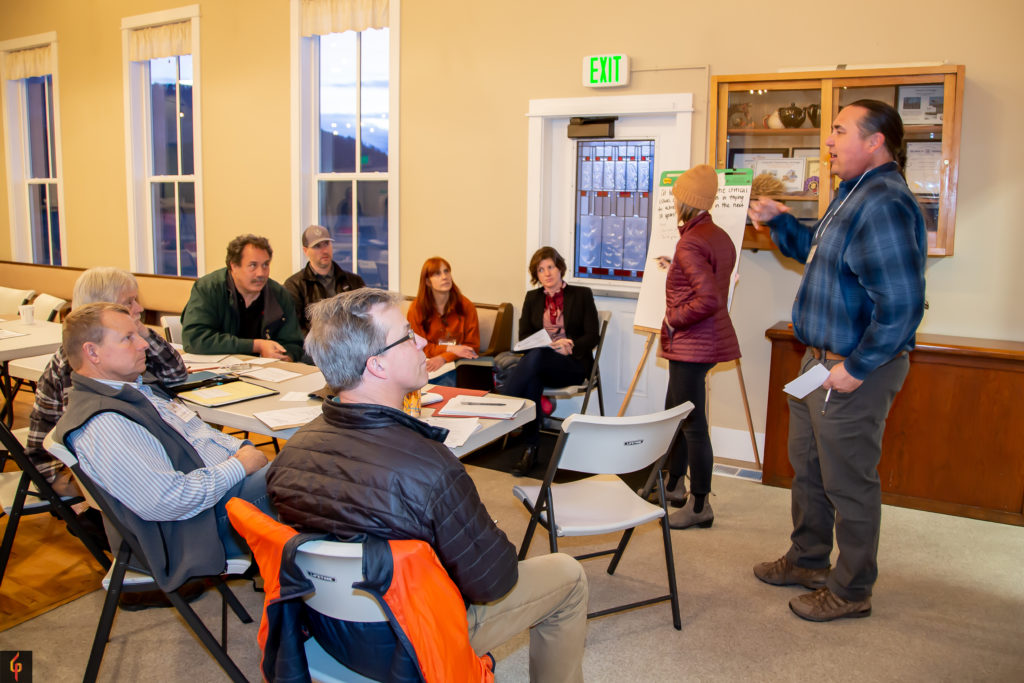
Q1: What do you see as the critical issues, concerns, or challenges in trying to achieve these objectives in 10 years?
- Need to prioritize resources.
- Conservations happening w/Kittitas Fire Adapted Community Coalition, need to determine who’s missing at table?
- What is our position on fire policy
- Joint plan w/agencies for fuel suppression
- Fire can also be destructive + helpful
- Strategy utilizing fire & mechanical to reach desired condition -> cross-boundary
- Individual management objectives & common language
- Community values of different ownerships – What are we trying to protect in different areas
- Protection of homes/structures in Wildland Urban Interface -> identify roles + responsibilities
- Protecting/enhancing fish habitat
- Engage resources & problem solving w/Fire Adapted Communities
- Secondary owners – not as engaged
- Pulling resources from reservation to address structure fires -> diff values / groups at risk – why one prioritized over others.
Q2: Do you have any practical suggestions for how Tapash might address or work through these challenges?
Top Priority in the next 10 years for fire:
- All lands all hands approach / cross-boundary collaboration
- Integrated mechanical + managed fire in a way that addresses values + objectives
- Wildfire info database that maps values, work on the ground proposed projects etc.
- Fuel reduction – ongoing maintenance
- Owner education + outreach, not just same folks at the table. + change attitudes + increase knowledge
- Semi-quantifiable measure of communities’ w/treatments around them; track accomplishments on private land – – Tracking / monitoring work + fit in larger landscape
- Culture of what it means to live in a fire environment
- Change culture of fear around smoke – Change culture of smoke + understanding the we need more time for smoke to be allowed in order to do treatments + make landscape – level impact.
Non-Timber Natural Resources & Restoration Break Out Group
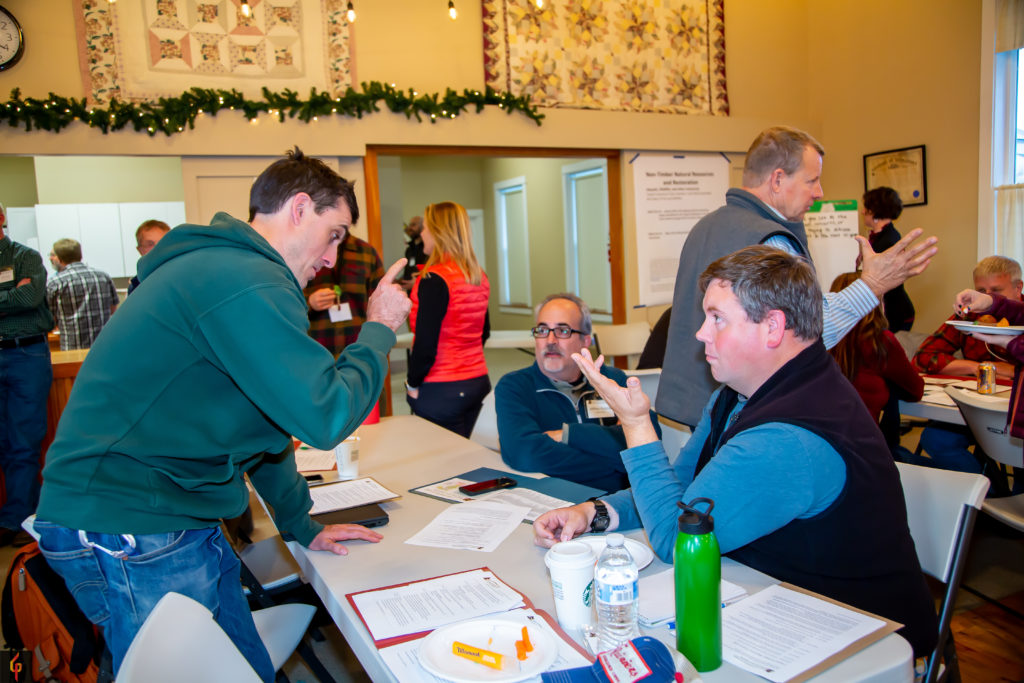
Q1: What do you see as the critical issues, concerns, or challenges in trying to achieve these objectives in 10 years?
- Terrestrial Resources sometimes are seen as a constraint – this is largely reflected when dealing with issues like spotted owl circles that define things you cannot do.
- We need funding for non-timber, non-aquatic r restoration – Large woody debris projects have the rare quality that other forest management activities in that they yield the needed resources for restoration; but this is the exception, not the rule. Resources directed towards non-timber, non-aquatic restoration are typically scarce.
- Habitat connectivity needs a stronger focus – this important issue is largely ignored except in transportation projects (e.g. overpasses and underpasses).
- Checkerboard ownership needs to be complementary
- Permitting needs a broad process view.
- Aquatic restoration has too narrow a view – just a few listed anadromous fish species are nearly the entire regional focus of aquatic restoration, other aquatic species are ignored.
- Restorative strategies needs to think “process”: Management is typically focused on a desired future condition. That DFC is not an immediate outcome of a treatment. The treated stand is not what it was before nor what we want it to be in the future (e.g., open stands of “large” trees). Short term goals are best thought of manipulating ecological processes not yielding an outcome in the distant future.
- Synthesis is hard: even with great interdisciplinary process and wonderful ideas, synthesizing (maybe integrating?) those ideas into a management prescription is very difficult.
Q2: Do you have any practical suggestions for how Tapash might address or work through these challenges?
- We need more cross-discipline brainstorming.
- Promote creative thinking focused on specific places – This idea included the need to manage for heterogeneity and habitat diversity at all scales to have effective terrestrial restoration.
- We need creative thinking early and well-defined synthesis.
- Prioritize well to manage time problem – Simply put, we have limited money and staff resources, so appropriate and effective prioritization will greatly impact success or failure.
- Process and project should create investment in future.
- Hard look at Aquatic vs. Terrestrial priorities. Tapash strategic objectives really only includes a single restoration objective and that is limited to aquatic restoration.
- The central point many people raised is to have wildlife habitat elements really incorporated, we need wildlife biologists engaged at the planning stage for project, right now it is mainly at the review stage.
Upcoming Tapash Stakeholder Meetings
Winter Qtr. February 18th, 2020
- Purpose: Check the course – Deep dive, project related to FY20 Annual Operating Plan with focus on watersheds. Are there sticking points we know of right now and what can we do to fix them or to make progress towards fixing them?
Spring Qtr. May 13th 2020
- Purpose: Continue to check the course: ½ project related (as per February), ½ create initial draft of recommended priorities for the FY21 Annual Operating Plan.
Summer Qtr. August 12th, 2020
- Purpose: Accountability and Lessons learned – report out on FY20 Annual Operating Plan. Assess accomplishments with focus on lessons learned to improve performance in FY21.

